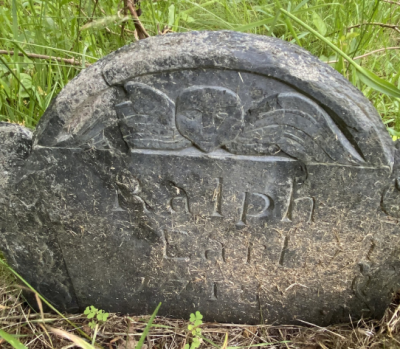Seathrift’s storied past resurfaces, uncovering tides of history


What do a whaling captain, an art dealer and the grandson of an “prominent English family” have in common?
They all once lived at the property now known to be 288 Russells Mills Road.
Though the big white historic home with a cupola that has a direct view of the ocean has become somewhat of a landmark to the town, the “Seathrift” wasn’t the first house on the property, shared Anabelle Persson, granddaughter of Bengt Persson, the current property owner.
Through a presentation hosted by the Dartmouth Historical and Arts Society, Persson recounted the property’s history dating back to 1700 when it was first developed by Ralph Earl Jr., grandson of British settlers Captain Ralph Earl and Joan Savage — “the first generation to create this dynasty in America.”
Persson, 16, resides in Florida and completed this research project as part of her Silver Star Award for the Girl Scouts, which is one of its highest awards given to those who find an issue they care about and make a difference in their community.
Persson discussed the different property features at the Seathrift that call back to the time of the Earl family, including the graveyard, which includes stones of Ralph Earl Jr. himself, his wife, son and others related to the property.
She described the markings on some of the headstones and what they mean, such as the “death head,” which derives from Puritans, representing the idea of “original sin.” However, she added that by the time those buried in the graveyard had got the simple engraved, it had a more angelic appearance and meaning to it.
The property was later purchased by whaling Captain Benjamin Wing who constructed the main six-bedroom home on the property in 1860 and gave it its name, Persson said.
Wing was born in Dartmouth in 1822. During his lifetime, he led a whaling fleet and went on 10 voyages before retiring to the Seathrift in 1882, Persson said.
“Due to the Seathrift’s close proximity to the harbor, whale ships were actually built on the shore side of the property,” she added.
Wing was quite involved in politics, having served seven consecutive terms on the Select Board — six of which he did as chair, according to Persson. A republican, he represented Dartmouth in the legislature from 1872 to 1873 and also represented a senatorial district in 1876.
“He was one of the most influential men of Dartmouth,” Persson said.
In addition to the graveyard, the property also includes a chapel, which was once used for weddings, shed, barn and pump house, that still has its old mechanics, according to Persson.
The house changed hands about three more times before making it to the Persson family. Persson said the home hasn’t changed much since its original construction, but the once 350 acre property now sits at 5.73 acres.
“For more than 300 years Seathrift has been a piece of growing and living history,” Persson said. “The property has been owned by a diverse group of people. The land tells the story of growth and change, representing society as a whole.”
She added, “Seathrift will always remain an important part of Dartmouth history.”















